Are you prepared for the unexpected? Crafting an effective emergency evacuation plan is crucial for ensuring the safety of everyone involved in any event. By outlining clear procedures and designated responsibilities, you can help attendees navigate potential emergencies with confidence. So, let's dive deeper into creating a tailored evacuation plan that prioritizes safety and peace of mindâread on to learn more!
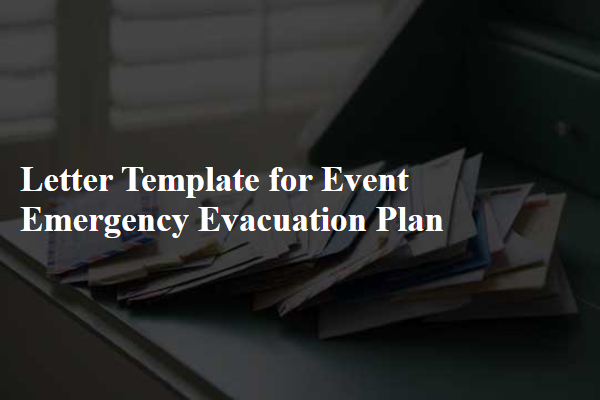
Clearly Defined Emergency Scenarios
An effective emergency evacuation plan must include clearly defined emergency scenarios to ensure safety and preparedness in critical situations. Common scenarios such as fire hazards, chemical spills, natural disasters (like earthquakes or floods), and active shooter incidents must be addressed. Each scenario should include specific details about the location, such as floor plans of buildings (including exits and assembly areas) and designated safe zones (such as parking lots or open fields). Emergency contact numbers for local authorities (like fire, police, and medical services) must be readily available. Additionally, training drills should be scheduled periodically, enabling staff and attendees to practice the evacuation procedures. Such proactive measures enhance overall preparedness and response efficiency during emergency situations.
Evacuation Routes and Maps
In emergency situations, evacuation routes must be clearly marked and well-communicated to ensure the safety of all occupants. Detailed evacuation maps, illustrating primary and secondary routes from various areas within the building (e.g., offices, conference rooms, restrooms), play a critical role in guiding individuals efficiently. Locations of emergency exits, stairwells, and assembly points (designated safe areas, typically away from the building) should be prominently displayed and easily accessible. Evacuation drills (scheduled practices, typically held twice a year) enhance familiarity with these routes, reducing panic during actual emergencies. Signage should include clear icons and instructions, accommodating individuals with disabilities, ensuring everyone can navigate the premises quickly. Regular reviews of the evacuation plan (at minimum annually) and updates of route maps ensure operational effectiveness and readiness in case of natural disasters (such as earthquakes or fires) or other emergencies.
Communication Protocols
Effective communication protocols are crucial in managing emergency evacuations within venues, such as convention centers or schools. Establish clear roles that designate individuals responsible for communicating vital information during crises. Utilize alarm systems, such as sirens or strobe lights, to alert attendees to evacuate. Implement two-way radios or emergency mobile apps to facilitate real-time communication among staff. Clearly display emergency contact numbers and evacuation maps in visible areas, ensuring all attendees are familiar with emergency exits and assembly points. Conduct regular training drills, ensuring participants understand their responsibilities and communication channels, enhancing overall safety. Regular updates during emergencies can prevent confusion, maintaining order until all individuals are accounted for.
Assigned Roles and Responsibilities
In an event emergency evacuation plan, clearly defined roles and responsibilities are crucial for ensuring safety and efficiency. The Incident Commander oversees overall operations, directing staff and coordinating with emergency services, such as local fire departments or police. Safety Wardens, stationed at designated exit points, are responsible for guiding attendees to safe exits while ensuring the evacuation route remains clear. First Aid Responders, trained in CPR and emergency response techniques, provide immediate medical assistance to anyone injured during the evacuation process. Communication Officers manage the flow of information, disseminating updates via loudspeakers or social media channels, and ensuring everyone is aware of the situation. Additionally, assembled volunteers or staff members assist individuals with reduced mobility, ensuring their safe evacuation. Regular training exercises, held annually at locations like community centers or conference halls, reinforce these roles and contribute to a culture of preparedness.
Access to Emergency Equipment and Resources
Access to emergency equipment and resources during a crisis situation is crucial for ensuring the safety and well-being of all individuals present at the event venue, such as the Grand Convention Center in Downtown City. Emergency kits containing first-aid supplies, flashlights, and fire extinguishers must be readily available at designated locations, including entrances and exits. In addition, clear signage must indicate the location of fire alarms and emergency exits, facilitating a swift evacuation. Professional emergency response teams should be on-site, with trained personnel equipped to handle medical emergencies, such as CPR or injury management, ensuring timely assistance. Coordination with local emergency services, including the Fire Department and Emergency Medical Services (EMS), is essential to streamline communication and response efforts during an incident. Regular drills and training sessions should be conducted to familiarize all staff with emergency procedures, ensuring seamless execution when faced with real events.
Letter Template For Event Emergency Evacuation Plan Samples
Letter template of emergency evacuation instructions for outdoor festivals
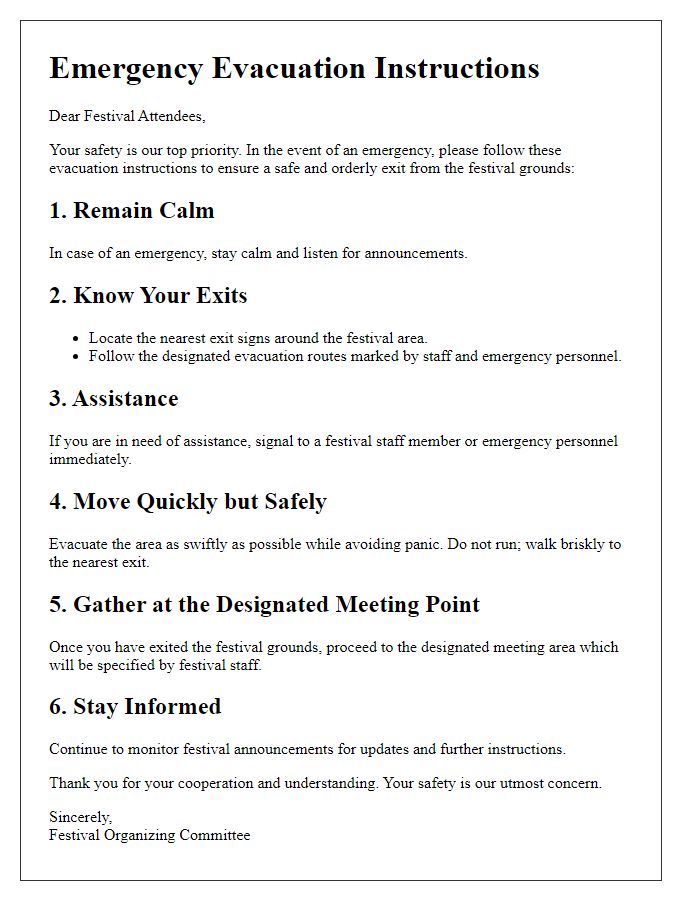

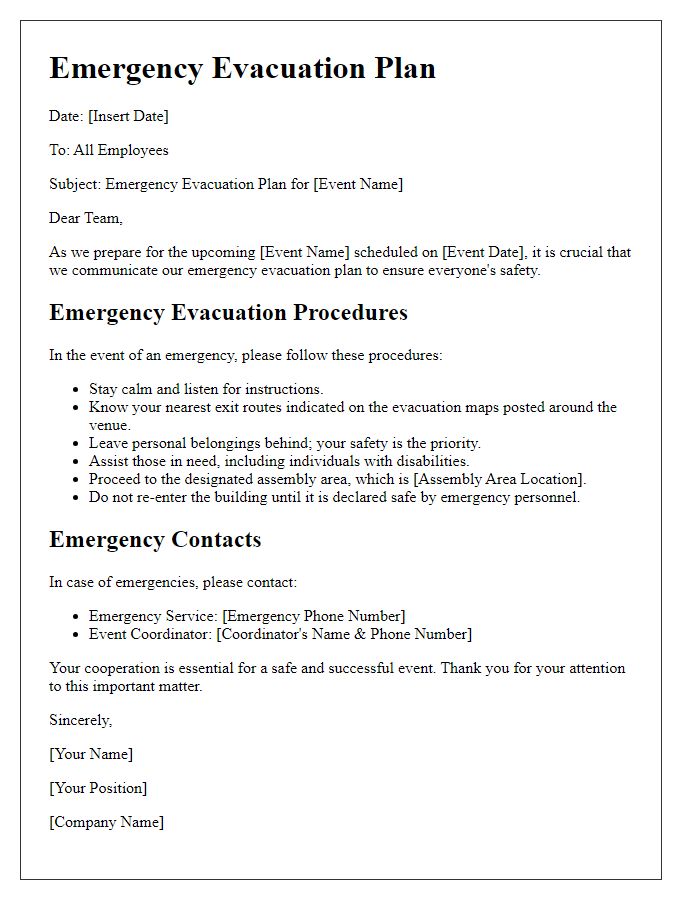
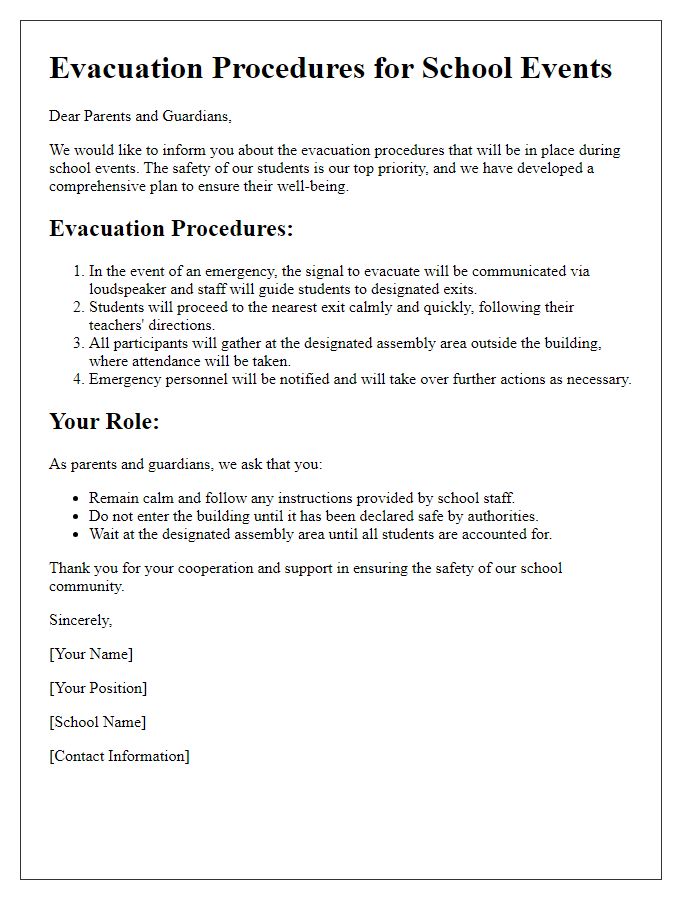
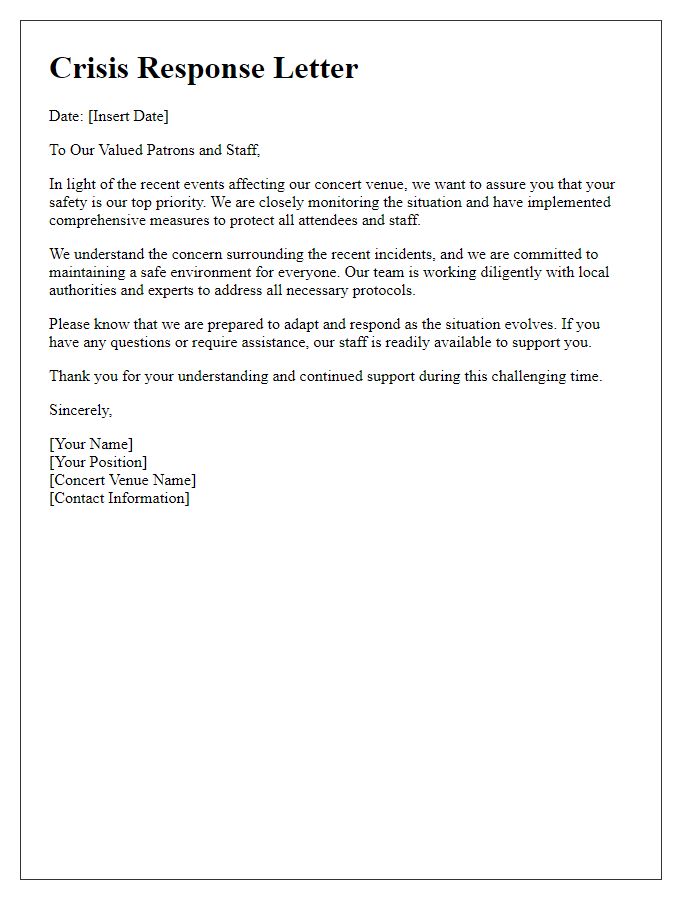
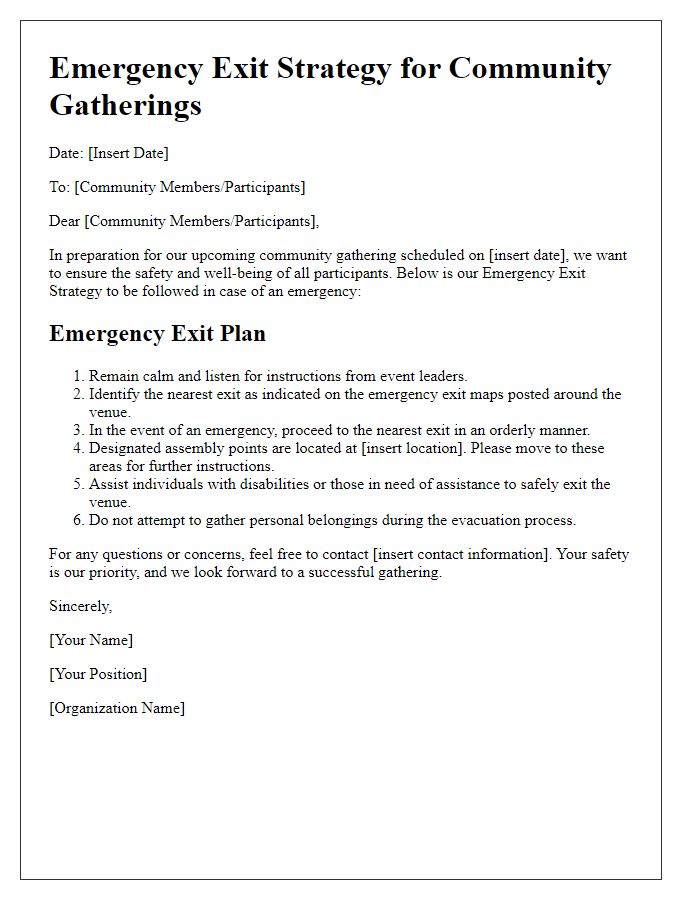
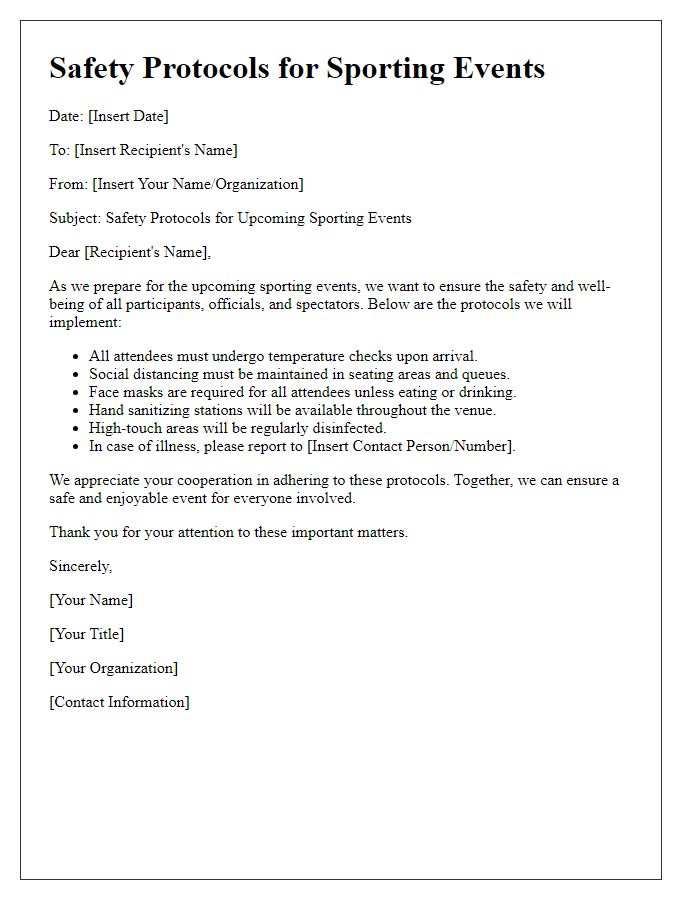
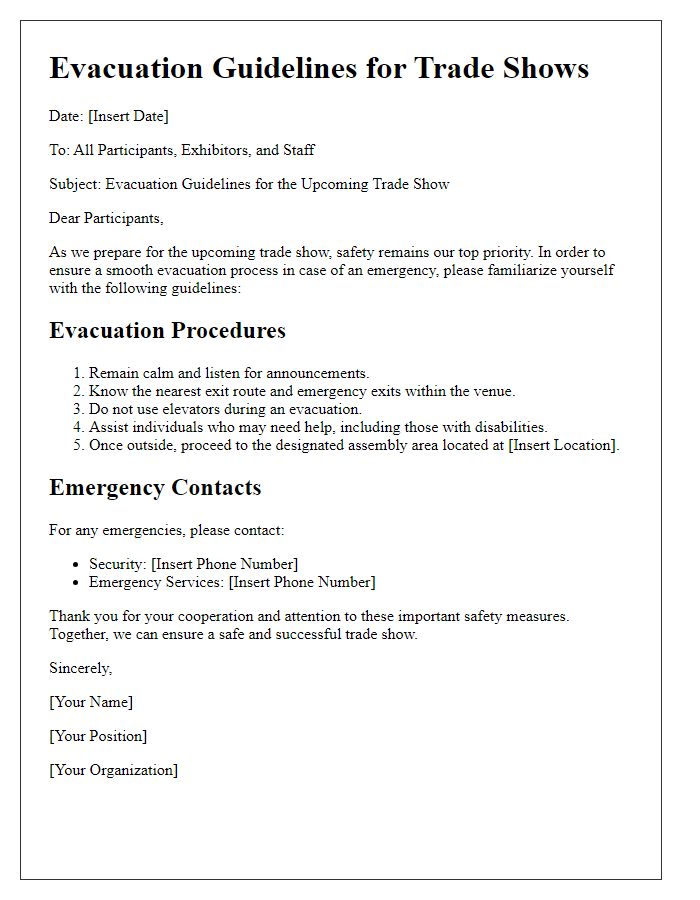
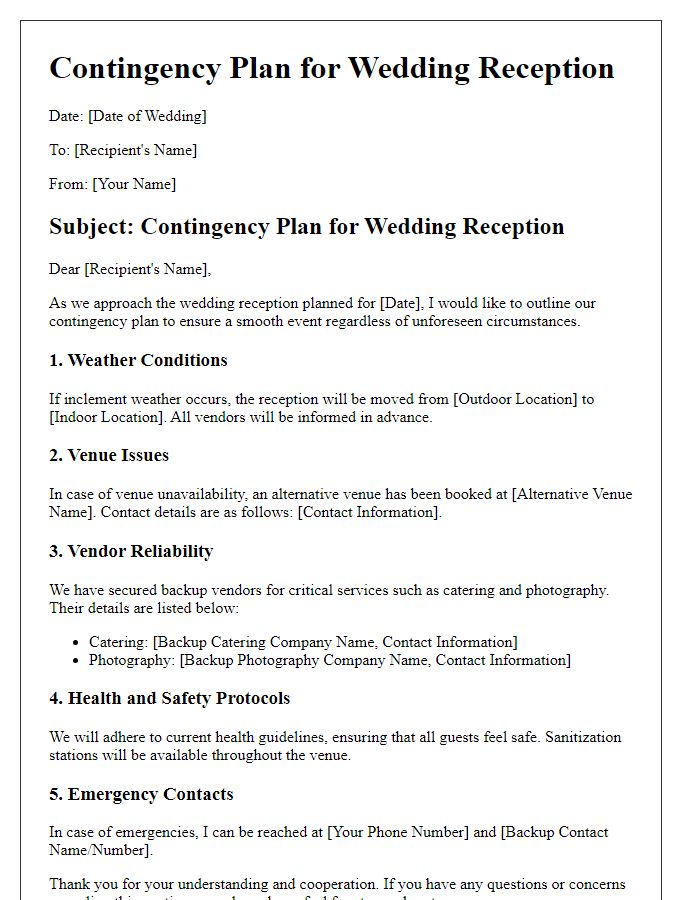
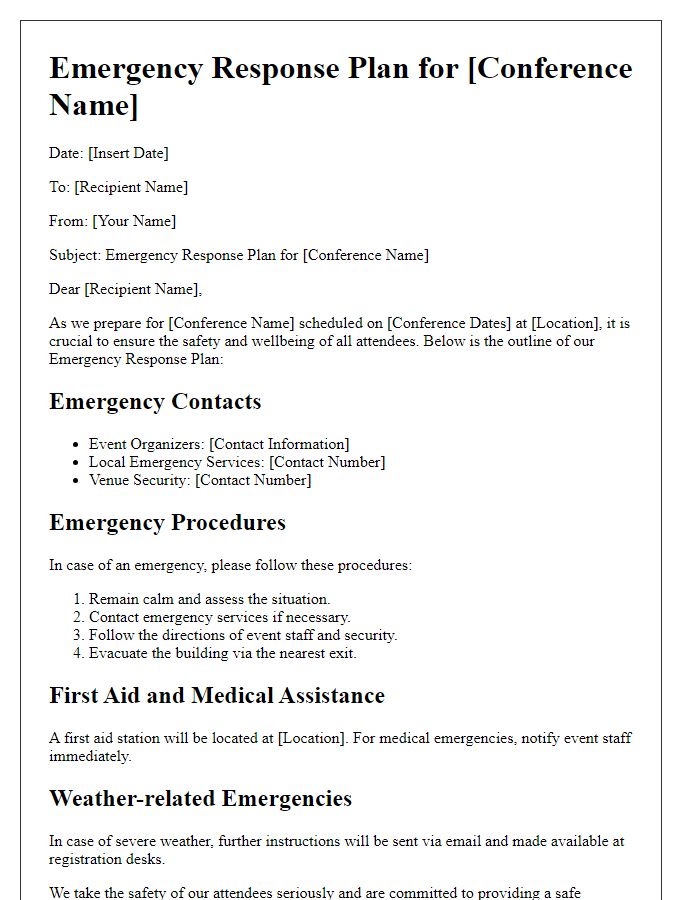
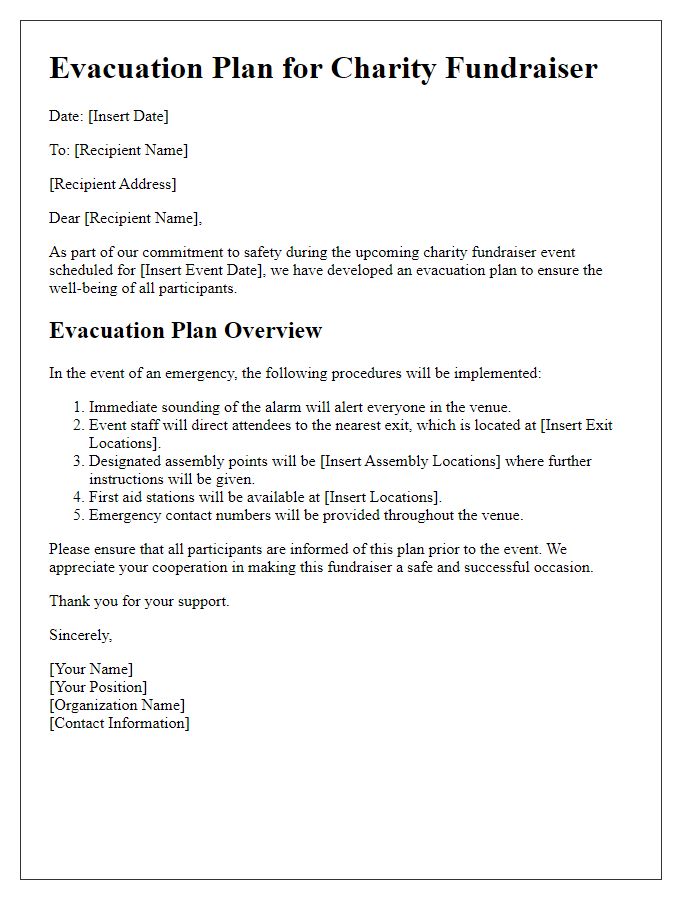

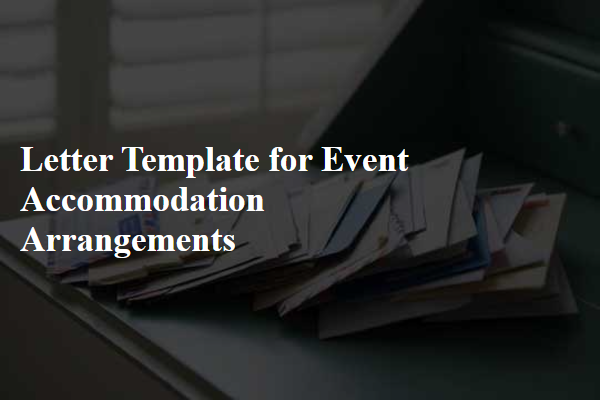
Comments